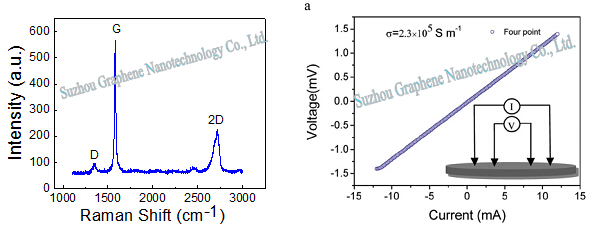Graphene can be classified by difference thicknesses. Single layer is called grahene, double layers and triple layers are called bilayer graphene and trilayer grapheme, respectively. Graphene materials less than 10 layers are called few layer graphene. Others are called multi-layer graphene (<10 nm) or graphene nanoplatelets (<100 nm).
Traditional reduced graphene oxide process has succeeded on large production. However, the perfect crystal structure of graphene is destroyed during the preparation. The high quality graphene powder produced by Suzhou Graphene Nanotech. Co., Ltd. effectively remains the intrinsic performance of graphene, such as high electrical and thermal conductivity. This feature benefits from the special chemical intercalation process, preventing the Sp2 structure of graphene from repeatedly oxidation and reduction. The electrical conductivity of the pressed thin film made from the high-quality graphene powder has reached 105 S/m.
High quality few-layer graphene powder is a brand product of Suzhou Graphene Nanotech. Co., Ltd. Advanced products consist of high quality graphene with a typical thickness of 1 nm and 2-3 nm, showing a perfect crystallization and defects free structure. Its application covers a wide range in electrical conductivity、antistatic、thermoelectric、thermal sink and functional composite materials.

Table 1. Product parameters.
| Property | Unit | Typical values |
| Thickness | nm | 2 |
| Size | μm×μm | 50×50 |
| Purity | % | 98 |
| Conductivity | S/m | 105 |
| Oxygen content | % | 0.5 |
| Acide residual | % | 0.5 |
| BET | m2/g | 100-500 |

 HOME
HOME  中文版
中文版 English
English
